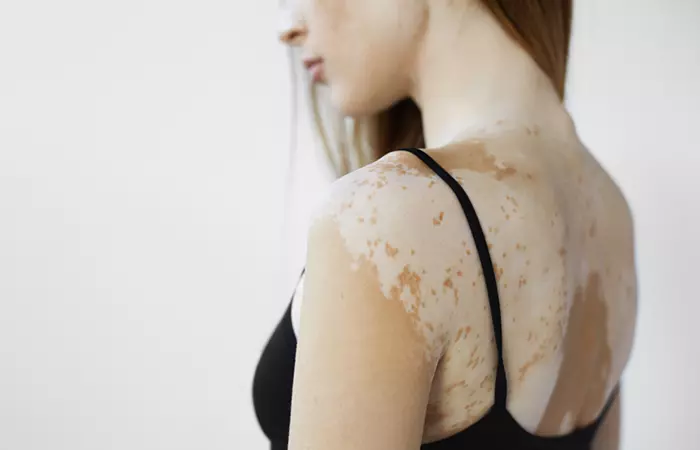White patches on skin can be concerning for many people. They can appear anywhere on the body and vary in size. At Anand Hospital in Meerut, we frequently encounter patients worried about these skin changes. Understanding the causes and types of white patches can help you manage your skin health better.
Causes of White Patches on Skin
1. Vitiligo
Vitiligo is a condition where the skin loses its pigment cells, leading to white patches. These patches can appear on any part of the body, including the hair and inside of the mouth. Vitiligo occurs when the melanocytes, the cells responsible for skin pigmentation, are destroyed. The exact cause of vitiligo is unknown, but it’s believed to be related to autoimmune, genetic, and environmental factors.
2. Tinea Versicolor
Tinea versicolor is a fungal infection caused by the yeast Malassezia. It interferes with the normal pigmentation of the skin, resulting in small, discolored patches. These patches are usually lighter or darker than the surrounding skin and can appear on the trunk, neck, and upper arms. Factors such as hot and humid weather, oily skin, a weakened immune system, and hormonal changes can increase the risk of developing tinea versicolor.
3. Pityriasis Alba
Pityriasis alba is a common skin condition seen in children and young adults. It starts with slightly scaly, pink patches that eventually become white and scaly. These patches are more noticeable in people with darker skin and usually appear on the face, neck, upper trunk, and arms. The exact cause of pityriasis alba is not well understood, but it is often associated with dry skin and atopic dermatitis.
4. Lichen Sclerosus
Lichen sclerosus is a chronic skin condition that causes white, thin patches of skin, usually in the genital and anal areas. It can also appear on the upper body, breasts, and upper arms. The cause of lichen sclerosus is unknown, but hormonal imbalances and an overactive immune system are believed to play a role.
5. Post-Inflammatory Hypopigmentation
This condition occurs after the skin has been inflamed or injured. The affected area may heal with less pigment, leading to white patches. Post-inflammatory hypopigmentation can result from conditions such as eczema, psoriasis, burns, or infections.
Types of White Patches on Skin
1. Localized Patches
Localized patches are white patches confined to a specific area of the body. Conditions like lichen sclerosus and post-inflammatory hypopigmentation typically cause localized patches. These patches can vary in size and shape.
2. Segmental Patches
Segmental patches are white patches that appear in a band or segment on one side of the body. This type of vitiligo is called segmental vitiligo. It is less common than non-segmental vitiligo and usually progresses for a few years before stabilizing.
3.Generalized Patches
Generalized patches are widespread white patches that appear on multiple parts of the body. This pattern is often seen in conditions like vitiligo and tinea versicolor. Generalized patches can cover large areas of the skin and may merge together.

Managing and Treating White Patches on Skin
Consult a Dermatologist If you notice white patches on your skin, it’s important to consult a dermatologist for a proper diagnosis and treatment plan. They can determine the underlying cause and recommend appropriate treatments.
Topical Treatments Depending on the cause, topical treatments such as corticosteroids, antifungal creams, and calcineurin inhibitors may be prescribed to reduce inflammation and treat infections.
Phototherapy Phototherapy, also known as light therapy, can be effective for treating conditions like vitiligo and psoriasis. It involves exposing the skin to ultraviolet (UV) light under medical supervision.
Oral Medications In some cases, oral medications may be necessary to manage white patches. Antifungal pills, antibiotics, or immune-suppressing drugs can be prescribed based on the underlying condition.
Lifestyle Modifications Maintaining good skin hygiene, using sunscreen, and managing stress can help prevent and manage white patches on skin. Avoiding excessive sun exposure and using moisturizers regularly can also improve skin health.
Conclusion
White patches on skin can have various causes, and understanding these can help in managing and treating the condition effectively. If you’re experiencing white patches, don’t hesitate to seek medical advice. At Anand Hospital in Meerut, we are dedicated to providing comprehensive care for all skin conditions. Visit us here to learn more about our dermatology services.
By understanding the causes and types of white patches on skin, you can take proactive steps to maintain your skin health and well-being.

